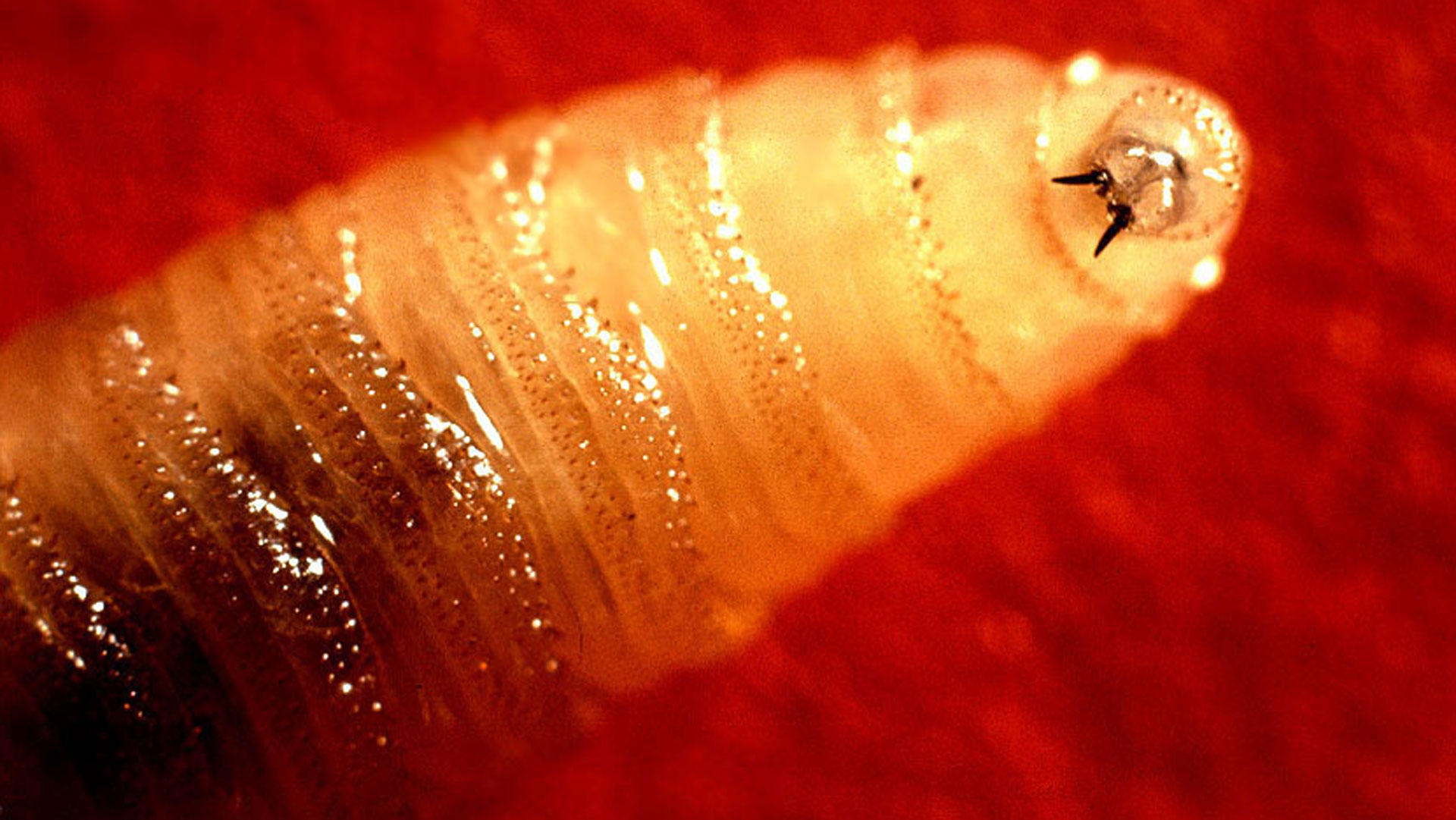
A New World screwworm (NWS) outbreak in Mexico has raised alarms at the U.S. Department of Agriculture (USDA), which is painfully familiar with the consequences should the parasite invade the United States. The impact on livestock and wildlife—including game animals—could be devastating if the flying insect and the flesh-eating maggots it produces are not stopped before gaining entry.
On May 11 U.S. Secretary of Agriculture Brooke L. Rollins announced, “The United States has ordered the suspension of livestock imports through ports of entry along our southern border after the continued spread of the New World Screwworm in Mexico...The protection of our animals and safety of our nation’s food supply is a national security issue of the utmost importance.”
An adult NWS is similar in appearance to a common fly, but according to the USDA they, “…are blue-green, have three dark stripes on their backs, and have orange eyes; they are about twice the size of a housefly.” It’s the parasite’s larval stage that threatens warm-blooded mammals.
“They drop their eggs primarily in surface wounds, but also in noses and sinus cavities. Left untreated in humans, livestock, or wild animals, the egg masses hatch into swarms of larvae—the ‘worm stage’—which embed themselves in the host’s flesh and consume the living tissue and fluids. The appearance of the larvae and the way they burrow into the host’s flesh give the screwworm its common name. Feeding screwworms enlarge the wound and attract additional female flies, which deposit more and more eggs in the wound. If the infestation remains untreated, the host animal has little chance of surviving the secondary infections that often follow,” the above-linked USDA webpage explains.

In November 2024 NWS was detected in distant regions of southern Mexico, prompting the USDA to make the same move as this month’s import closure. By February of this year, after Mexican officials launched a comprehensive eradication program—in concert with enhanced inspection—importation resumed. This month’s resumption of the policy came after the parasite was detected in Mexican farms much closer, only 700 miles south of the U.S. border.
“As a life-long resident of Texas, this one hit home for me,” commented Corey Mason, Wild Sheep Foundation executive vice president of conservation and chief operating officer. “I recall the horror stories from the last outbreak back in the 1960s and with our recent efforts to re-establish desert bighorn sheep in Texas, not to mention what this means for cattle, mule deer and whitetail deer, this situation must be dealt with swiftly.”
A Strengthening Tactics to Obstruct the Population of Screwworms (STOP Screwworms) Act is being introduced by U.S. Senators John Cornyn (R-Texas), Ted Cruz (R-Texas), and Ben Ray Luján (D-N.M.), as well and Rep. Tony Gonzales (R-Texas). It would authorize funds for and direct the USDA to begin construction on a new sterile fly production facility to combat the growing NWS outbreak that threatens to wreak havoc on the American cattle industry, as well as wildlife.
The new facility would produce sterile male screwworm flies that would be released into infested areas to help combat the growth of the screwworm population. The sterile fly technique was instrumental in eradicating NWS from the United States in the 1960s and from Mexico in the ’90s. Sterile male flies can outcompete local populations and effectively wipe out an entire generation of screwworms in a given area.
The ’50s and ’60s Battle
NWS is endemic in South America, as well as Cuba, the Dominican Republic and Haiti. By the late 1950s it spread north through Panama, however, made its way to Mexico and finally into U.S. cattle and wildlife.
The Texas Wildlife Association estimates that at the outbreak’s height the Lone Star State’s whitetail deer population declined by roughly 50 percent. A new fawn’s naval is particularly attractive to the parasite.
Entomologist Edward F. Knipling, a pioneer in the sterile insect technique, and his team of researchers at the USDA employed his then-innovative approach to handle the original NWS stateside invasion. In 1966, after more than a decade battling the parasite, the United States was free of self-sustaining NWS populations. It would be another 25 years before Mexico could make the same claim.
Since the original outbreak, agreements between Central American and North American nations established protocols to prevent a recurrence. A defensive front line was established in Panama, where aggressive programs, testing and education were tailored to halt the NWS northward advance. Other zones with similar procedures were established behind that zone, including biological efforts and monitoring in Mexico and the United States.
Wildlife in areas that do not share an international border can also be affected. In 2016, for example, it was detected in a population of Key deer on a Florida wildlife refuge. Although that NWS outbreak has been eradicated, it indicates the parasite is of concern to sportsmen nationwide, not just those who hunt in California, Arizona, New Mexico, and Texas.
Readers interested in learned more about NWS and its eradication can find more by visiting the USDA informational brochure found online here.


































